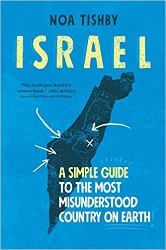This compelling and engaging history of the Arab-Israeli conflict is seen through three pairs of eyes — the eyes of a European Zionist, the eyes of a Jew from the Middle East, and the eyes of an Arab leader, scion of a family that held positions of leadership for centuries.
Why 1913? Because 1913 is the year that everything went wrong. There are academic arguments as to when the Arab-Israeli conflict actually began, but Marcus, a Pulitzer prize-winning former Wall Street Journal correspondent, suggests that this year, 1913, when the Zionist Congress pursued the idea of building the future state with Hebrew labor and not Arab labor was when the conflict began to percolate. It was during that same year that the Arab Syrian Congress met to declare unity as a response to the encroaching European Zionist movement.
Initially, the book pays particular attention to the internal conflicts between Jewish leaders as well as to conflicts between Arab leaders. And then the author deftly brings into focus the external conflict between Arabs and Jews.
Marcus reveals great insight into her subject matter, insight not often found in the work of a journalist who came to the region specifically to cover a story. Her perspective is both fresh and cutting.




